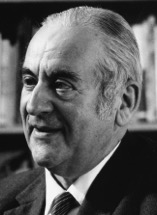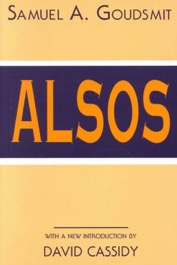
During World War II he worked at the Massachusetts Institute of Technology's radiation laboratory. Because of his upbringing in the Netherlands, his facility with languages, and his close relationship with many European physicists, Goudsmit became scientific head of the Manhattan Project's Alsos Mission set up to assess the Nazis' work developing nuclear weapons. In his book Alsos, published in 1947, Goudsmit concluded that the Nazis did not get close to creating an atomic bomb.
After World War II, Goudsmit was briefly a professor at Northwestern University, and from 1948-1970 was a senior scientist at the Brookhaven National Laboratory. From 1951 to 1962 he was editor of the leading physics journal Physical Review. In 1958 he started Physical Review Letters and later became editor‐in‐chief of all publications of the American Institute of Physics until his retirement in 1974, when he became Distinguished Visiting Professor at the University of Nevada in Reno, where he remained until his death.
Goudsmit also made scholarly contributions to Egyptology. The Samuel A. Goudsmit Collection of Egyptian Antiquities is at the University of Michigan's Kelsey Museum of Archaeology in Ann Arbor.
Click on the cover for details about the eBook:




